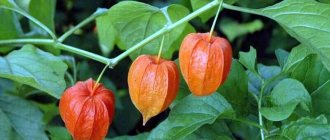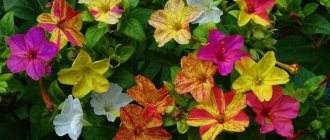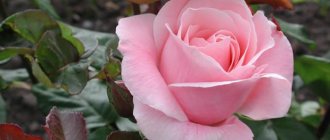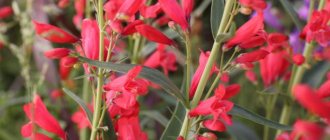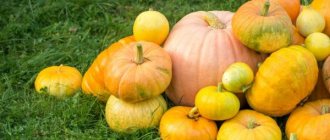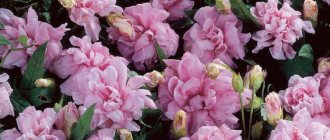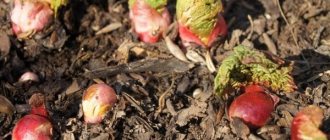Author: Natalya Category: Garden plants Published: February 14, 2019Republished: February 14, 2019Last edits: January 13, 2021
- Growing conditions
- Reproduction by root suckers
- Beneficial features
Japanese Chaenomeles (lat. Chaenomeles japonica), or Japanese quince , is a species of flowering dicotyledonous plants of the Chaenomeles genus of the Rosaceae family. The species is native to Japan, although the plant is also widely grown in China and Europe. The generic name is literally translated from Greek as “split an apple.”
Planting and caring for chaenomeles
- Flowering: abundant, in May-June for three weeks.
- Planting: in spring, before sap flow begins, and in autumn, during leaf fall.
- Lighting: bright sunlight.
- Soil: rich in humus, light – sandy loam, loamy or soddy-podzolic, slightly acidic – pH 6.5.
- Watering: after planting - frequent and plentiful, especially during dry periods. In the future, regular but moderate.
- Fertilizing: after planting, fertilizing will be needed only after a year: in the spring, a bucket of compost, 100 g of potassium fertilizer and 300 g of superphosphate are added to the tree trunk circle. In summer, quince is fertilized with ammonium nitrate or mullein.
- Pruning: sanitary cleaning and formative pruning are carried out in early spring, before sap flow begins. When the bush reaches eight to ten years of age, it undergoes anti-aging pruning.
- Reproduction: seeds, root suckers, grafting and cuttings.
- Pests: scale insects and spider mites.
- Diseases: cytosporosis and ramulariasis.
Read more about growing Chaenomeles below.
Botanical description
Japanese quince chaenomeles is a densely leafy shrub up to 3 m high with a dense crown of the same diameter. Young shoots of the plant are green, scaly-felt, then they become bare and black-brown. The leaves of Japanese quince are spatulate or obovate, narrowed towards the base, with blunt-toothed edges, 3 to 5 cm long and 2 to 3 cm wide. When young they are bronze, but the mature leaves of the plant are dark green. Pink, scarlet-red or orange flowers up to 5 cm in diameter are collected in 2-6 pieces in corymbose inflorescences. The round-shaped yellow-green edible fruits of Japanese quince with a diameter of up to 6 cm ripen by mid-autumn.
Planting and caring for quince in open ground
The plant has been in cultivation since 1874. The Japanese quince bush grows very slowly. The plant is thermophilic, but despite this it is able to withstand frosts down to -30 ºC, although at this temperature its annual shoots and flower buds that are above the snow level freeze slightly. Therefore, Japanese quince in Siberia may not bloom as luxuriantly as Japanese quince in the Moscow region or Japanese quince in the Urals. However, this crop is grown even in places with harsh climates.
Characteristic features of culture
Japanese quince is a relative of all the familiar apple and pear trees. In gardens it is used as an ornamental crop. Distinctive features of the plant:
- there are tree (up to 3 m) and bush (up to 0.6 m) forms;
- shoots are flexible, have thorns up to 2 cm long;
- the branches are densely leafy, the color of the leaves is emerald green;
- the plant blooms with pink-red, orange-red, white flowers;
- fruits with a diameter of 3-5 cm;
- fruit color is yellow-green or orange;
- the skin is dense, covered with a characteristic waxy coating;
- 1/2 of the fruit is occupied by the seed chamber.
The taste of the fruit is bitter-sweet, the flesh is dense and aromatic. Due to its rapid growth and decorative value, low bush quince is used in dachas to create hedges.
Planting Japanese quince in open ground
When to plant
Planting and caring for Japanese quince follows the general rules for growing garden shrubs. It is better to plant chaenomeles in open ground in the spring, before sap flow begins. Autumn planting of the plant is also possible, but it is less desirable, since the heat-loving chaenomeles may not have time to take root in a new place before the onset of frost. The best planting material is two-year-old Japanese quince seedlings with a closed root system, which are watered abundantly before planting. For seedlings with an open root system, you should carefully examine the roots, if necessary, soak them in water for several hours, and then remove rotten, dry and damaged roots.
- Oregano: cultivation, types and varieties
How to plant
Chaenomeles is planted in well-lit areas, since in the shade it develops worse and does not bloom as profusely. The plant prefers soil rich in humus, but light - soddy-podzolic, loamy or sandy loam with a slightly acidic reaction (pH 6.5). Japanese quince tolerates peat soils less well. It is advisable to allocate a place for it, protected from winds and drafts, on the south or southwest side of the house. Keep in mind that Japanese quince does not tolerate transplantation very well, and it will have to grow for 50-60 years in the place you choose.
The soil for spring planting needs to be prepared in the fall: cleared of weeds, dug up with the addition of leaf soil and sand. For digging, peat manure compost is also added at the rate of 10 kg per m² and 40 g of phosphorus and potassium fertilizers per the same unit of area. For a single planting, dig a hole with a diameter of 50 cm and a depth of 50-80 cm, and also prepare a soil mixture by adding 1-2 buckets of humus, 500 g of ash, 300 g of superphosphate and 30 g of potassium nitrate to the fertile soil from the top layer removed when digging the hole. . In group planting, plants are placed at a distance of 80-150 cm from each other, and when planting a hedge, an interval of 50-60 cm is sufficient. If you intend to get a fruit harvest by autumn, then plant 2-3 different varieties nearby. One bush of Japanese quince produces an average of about 2 kg of fruit, but there are also productive years when you can harvest up to 5 kg from one plant.
Planting and caring for an apple tree in the garden
On the day of planting, a mound of soil mixture is poured into the center of the hole and the seedling is placed on it so that the root collar is flush with the surface. The remaining space of the pit is filled with fertile soil mixture. After planting, the surface is compacted and watered abundantly. The shoots of the seedling are shortened to 15-20 cm.
A little something pleasant: picking fruits
The fruits ripen in September-October, each bush can produce up to 2-3 kg of harvest, it all depends on the intensity of flowering of the plant in the spring. The crop is pollinated in a cross-pollination manner, so if you need fruits, you need to plant several seedlings nearby or 2-3 varieties at once. In the middle zone, the crop will remain green for a long time; it must be harvested before frost, otherwise its taste will be impaired.
Chaenomeles ripens well in room conditions, gradually turning yellow - it can be processed in any way. If the fruit, which looks like a small apple, shrinks, it can be used for food - this is a natural process. Fragrant Japanese quince can be stored at home until the end of December.
Quince grown in the garden can be used to make marshmallows, syrup, jelly, jam, and liqueur. The organoleptic qualities of the fruits significantly improve and refresh the taste of compotes and jams made from chokeberries, peaches, apples, and apricots. Dried slices can be used in compotes made from a mixture of dried fruits.
Japanese quince care
Growing conditions
Growing and caring for Japanese quince is unlikely to seem like a difficult task. During the first time after planting, quince needs regular watering, this is especially important during dry periods. After watering, the soil around the plant is carefully loosened to a depth of 8-10 cm. At the same time, weeds should be removed. To retain moisture in the soil as long as possible, the trunk circle of Japanese quince, the size of the crown projection, is mulched with a layer of peat, pine nut shells, crushed bark or sawdust 3-5 cm thick.
Once you have applied fertilizer when planting in a hole, the plant will not need it for at least a year. From the second or third year of life, Japanese quince is fed with mineral and organic fertilizers in the spring: a bucket of compost, 300 g of superphosphate and 100 g of potassium fertilizer are poured into the trunk circle of each bush. During the summer, liquid fertilizing with a solution of ammonium nitrate (20 g of fertilizer for each bush) or mullein (3 liters of a ten percent solution for each plant) will not be superfluous.
In late autumn, you need to prepare Japanese quince for winter. The tree trunk circle is securely covered with a thick layer of dry foliage or spruce branches. Seedlings or rooted cuttings are covered with spunbond or lutrasil, and low-growing compact bushes are covered with wooden boxes or cardboard boxes.
Diseases and pests
Japanese quince gets sick in exceptional cases, when there is practically no care for it or under the influence of natural disasters, for example, in cool rainy weather, which provokes the activity of fungal infections, the development of necrosis and spotting. At this time, the plant can be affected by cytosporosis or ramularia: the leaves of the plant become brown, dry, and the color of the Chaenomeles bark changes. These diseases must be controlled with copper-based antifungal chemicals, but diseased branches and shoots must be removed and burned before treatment.
Among the pests for Japanese quince, scale insects and spider mites are dangerous, the appearance of which is easier to prevent than to get rid of them for a long time. The first preventive spraying with an acaricidal drug (Aktara, Aktellik, Karbofos and the like) is carried out before the buds open, and then re-treatment may not be necessary.
How to protect Japanese quince from diseases
Chaenomeles is highly resistant to various diseases, but in a cold and rainy year it can get sick. In this case, the following diseases cannot be ruled out:
- leaf necrosis - a gray coating appears at the edges, which spreads over the entire area of the leaf, which leads to its drying out;
- ramularia - brown spots appear on the foliage;
- cercosporiosis - spots of a round shape, dark brown in color, becoming lighter over time.
To treat a diseased bush, use a 0.2% solution of foundationazole or a 10% solution of copper sulfate. These remedies effectively cope with Japanese quince diseases.
Finally, watch a video about the plant.
Did you like the article?
Rate it and share it with your friends on social networks. If you have any questions, ask them in the comments, we will be happy to answer. CherryLink plugin not found
Pruning Japanese quince
The Japanese quince shrub tolerates pruning well, and this makes it a most valuable plant for ornamental gardening. To avoid injury, wear thick gardening gloves when pruning.
Planting and caring for pears in the garden
In the spring, sanitary cleaning of the bush is carried out: shoots frozen in winter, dry, damaged and improperly growing are removed. Places of cuts thicker than 7 mm are treated with garden varnish. Formative pruning is also carried out in the spring, before sap flow begins, but the crown of the plant begins to form at the age of four to five: to prevent the bush from growing wider and thickening, part of the root shoots are cut out annually, leaving only 2-3 young offspring. The most valuable are shoots located horizontally at a height of 20-40 cm from the ground. Shoots growing vertically or creeping along the ground must be removed.
When the bush reaches eight to ten years of age and the annual growth of shoots decreases to 10 cm, it is necessary to carry out anti-aging pruning. First, the bush is thinned out, leaving only 10-15 strong shoots. Since the main fruiting occurs on three to four year old branches, you need to gradually cut out branches that are five or more years old, replacing them with young shoots from the root shoots.
Common quince and its relatives
The familiar common or oblong quince (Cydonia Vulgaris Pers or Oblonga Mill) is the only representative of the genus Cydonia of the Rosaceae family. These are tall trees or shrubs with large fruits.
Once upon a time, the common quince belonged to the same genus along with pear and apple trees. Then it was combined into one genus along with Japanese, Chinese and evergreen quince. Because these plants have a lot in common. However, there were still more differences. Therefore, with the further development of science, all these plants were divided and each was allocated to its own genus. Chinese quince - Pseudocydonia, evergreen quince - Docynia. Japanese quince - Chaenomeles.
Reproduction of Chaenomeles
Japanese Chaenomeles propagates by seeds, cuttings, root suckers and grafting.
Reproduction by root suckers
Chaenomeles produces abundant root shoots, due to which the bush gradually grows in width and at the age of twenty occupies an area of about 2 m². You can dig up and plant root suckers 10-15 cm long and about 5 mm thick with well-developed roots. One plant can produce 5-6 such offspring. The planted shoots are regularly watered, and the surface of the soil around the shoots is mulched with shavings, wood chips or humus. The disadvantage of this method of propagation is that the shoots growing from the tap root still have an underdeveloped root system, and they have to be grown.
- Aspidistra in the photo with species names
Growing from seeds
The generative method of propagation of Chaenomeles is the most reliable. Fresh Japanese quince seeds, with a germination rate of about 80%, are sown in the ground before winter, and in the spring they sprout vigorously. Two-year-old seedlings form long tap roots, so they need to be planted in a permanent place as early as possible.
If you were unable to sow the seeds before winter, put them in the refrigerator for stratification, where they will remain in a bag of wet sand for 2-3 months. In the spring, as soon as they hatch, they can be sown in the ground.
Propagation by cuttings
The advantage of propagating Japanese quince by cuttings is that this method preserves the varietal properties of the plant. Green cuttings are cut in dry, hot weather in early June. Each cutting should have 1-2 internodes, and on the lower cut there should be a heel (a piece of last year’s wood) up to 1 cm long. For successful rooting of cuttings, it is necessary to use growth stimulants - indolylbutyric acid or Kornevin. The cuttings are immersed with the lower cut into a substrate consisting of three parts sand and one part peat, at an angle of 45º according to a 7x5 cm pattern and kept under a transparent cap at a temperature of 20-25ºC. The roots of the cuttings grow in 35-40 days, then the cuttings are planted in a permanent place.
Chaenomelis grafting
Japanese quince is grafted in May using the improved copulation method. A varietal cutting is taken as a scion, and a seedling of the main species or other rosaceous crops is used as a rootstock. Eye grafting is carried out in July-August, during the second sap flow: a bud (eye) with a piece of bark (scutellum) is cut off from the middle part of the varietal shoot with a sharp knife. Then a T-shaped cut in the bark is made on the bark of the rootstock, its edges are folded back and a shield with a peephole is inserted under them. Then the bent edges of the bark of the T-shaped cut are pressed against the shield and the scion is tightly tied in this place so that the eye itself is not covered with a bandage. After 3-4 weeks, if you did everything correctly, the eye should take root. If next spring the new bud sprouts, the bandage is removed.
Varieties of Japanese quince
There are so many varieties of Japanese quince that you could write a separate article about them, so we will introduce you only to the most popular of them:
- Nikolai is a low-growing and thornless variety of Ukrainian selection with a spreading crown, orange-red flowers and slightly lumpy round yellow fruits weighing 50-80 g;
- Gaillardi is an ornamental plant with salmon-orange flowers;
- Malardi is an ornamental bush with pink flowers with a white border along the petals;
- Likhtar is also a Ukrainian non-thorny variety up to 1 m high, characterized by winter hardiness. The flowers are orange-red, the fruits are yellow-green, slightly lumpy, round, weighing up to 100 g;
- Papella is an ornamental plant with yellow flowers with a pink border;
- Fascination is a Dutch variety up to 1 m high with thorny branches, large red flowers, round or ovoid green fruits weighing 50-60 g;
- Merlozi is a Belgian variety up to 2 m high with relatively prickly erect branches, large white flowers with pink stripes and irregular pear-shaped green fruits weighing 60-80 g;
- Umbilicata is a Japanese variety up to 2 m high with erect, relatively prickly branches, pink-red flowers and spherical fruits weighing up to 90 g;
- Crimson End Gold is an American selection variety up to 1 m high with thorny spreading branches, medium-sized dark red flowers and greenish-yellow ovoid fruits weighing from 40 to 80 g with blush and thin skin;
- Simoni is a French variety 1-1.5 m high with spiny spreading branches, large dark red flowers and small, greenish-yellow ovoid fruits weighing 40-50 g;
- Nivali is a French variety up to 2 m high with dense prickly branches, medium-sized white flowers and yellow round fruits weighing up to 80 g.
In addition to those described, such varieties of chaenomeles as Toyo Nishiki, Snow Queen, Rubra, Vitamin, Ellie Mossel, Pomaranchevy, Karavaevsky, Kalif, Nika, Citrine, Fragrant, Krasnoplodny and others are popular.
Description and types of plants
Chaenomeles is native to Japan and China. It was from the territory of these countries that at the end of the 19th century the plant began to spread throughout the globe.
In Russia, the plant received the popular name “Japanese quince”. You will be surprised, but in fact, four types of plants can be sold under this “name”:
- Japanese Chaenomeles (Ch. Japonica);
- Chaenomeles Maulei (Ch.maulei);
- Quince (Ch. speciosa (Sweet) Nakai);
- Chinese chaenomeles (Chaenomelescathayensis).
Each of them has its own characteristics, which you can find below. This information is useful when choosing and purchasing a plant.
Chaenomeles japonica
This species is called Japanese quince. The shrub is quite tall, about 3 meters. The foliage color changes as the plant ages, from bronze to dark green. The flowers are about 5 cm in diameter, red, and in Russian conditions appear before the leaves. Flowering usually begins in May. A characteristic feature of a plant of this species is uneven flowering, spread over a month. The fruits of Japanese quince are edible, up to 6 cm in size, the skin is bright yellow.
Japanese Chaenomeles is most suitable for growing in the Moscow region and Siberia due to its frost resistance. Even in very cold winters, when the thermometer needle drops below -300C, the Japanese quince does not die; only slight frosting of the upper buds is possible. See the table for other features.
| View | Annual growth | Reproduction | Application |
| Ch. Japonica | Slight, 3-5 cm | - seeds; — root suckers; - layering; - cuttings. | - hedges; - single and group plantings. |
The most famous varieties of this species are Papela, Gayardi, Malardi.
Chaenomeles Maulea
A low thorny shrub, the height does not exceed a meter. The leaves are bright green, the flowers are small, 2-3 cm, collected in inflorescences. During 2-3 weeks of flowering, the bush is literally strewn with red, brown-tinged flowers. The fruits are small, 2-3 cm in diameter, with a pineapple aroma. In Russian conditions they do not have time to ripen; ripening occurs while lying down.
Popular varieties and their height:
- Diamond – 1.2 m.
- Holland - 1.5 m.
- Nikolina – 1 m.
- Nivalis - up to 2 m.
- Visuvius – 1 m.
These varieties do well in Europe. In Russian conditions, during harsh winters and early frosts, branches and buds freeze. Therefore, for the winter, the bushes need to be covered with snow or lutrasil. Subject to proper conditions, cultivation is possible in the southern part of Siberia. In the European part of Russia, Mauleya will take root in all regions, with the exception of the northern ones.
Quince the Beautiful
The bush is from 70 cm to a meter high and has thorns. The leaves are elongated, red when blooming, emerald green in summer, purple in autumn. It blooms in May for no more than 20 days. Depending on the variety, the inflorescences range from pale pink and white to red.
We will not consider this species in detail; in the climatic conditions of Russia it does not take root well. But, if you still want to get acquainted with the bushes of this species, below there are photographs of several varieties of Quince Beautiful.
Chaenomeles chinensis
A large shrub reaching a height of up to 3 meters. The leaves are dark green, glossy. The flowers are deep pink in color, collected in inflorescences. The fruits are large and ripen by the end of September - beginning of October. The plant blooms and bears fruit every year, therefore in Europe and Central Asia it is used as a landscaping plant for streets. In Russia it takes root poorly; in Moscow and the Moscow region the bushes are weak, no more than 1.5 meters high. Chaenomeles chinensis can be bred in the Krasnodar region (especially on the Black Sea coast) and in the Crimea.
Now you know which type of Japanese quince is suitable for your region. Read on about the varieties.
Japanese quince in landscape design
Chaenomeles is rightfully considered one of the most beautiful ornamental shrubs: rich green leaves shimmering in the rays of the sun, massive bright flowers of various colors, amazing yellow-orange or greenish-yellow fruits that simultaneously resemble apples and pears... The main advantage of the plant is that that it remains attractive throughout the growing season, from spring to late autumn. And since the lifespan of the plant is several decades, the ornamental Japanese quince will decorate your garden for almost your entire life.
In landscape design, not only tall varieties of Chaenomeles are used: low Japanese quince, reaching a height of no more than 1 m, with arched branches covered in spring with a mass of flowers, is also incredibly attractive.
Chaenomeles japonica is widely used to form rocky gardens and hedges. It is grown both as a solo plant in a rock garden or on a spacious lawn, and in groups forming artistic or geometric compositions. A popular method of growing Japanese quince on a high trunk is done by grafting its cuttings onto a wild pear or mountain ash.
The plant goes well with dwarf spruce, slate pine and varietal thuja. Blooming Japanese quince looks spectacular next to daffodils and Carpathian bells.
Brief description of popular varieties
There are so many types and varieties of Japanese quince that one could write an encyclopedia. Therefore, we will focus on several of the most interesting varieties and briefly describe them.
Geisha Girl
Belongs to the “beautiful quince” species.
Shrub 1-1.5 meters high, branches densely strewn with dark green foliage. Against this background, the creamy pink inflorescences that appear on the plant from the first week of May stand out. The plant is thermophilic and prefers sunny areas. You can use Geisha Girl both in group and single plantings; the bush looks equally beautiful in different landscaping options.
Yukigoten
A significant drawback of the variety is its extremely slow growth. In 5 years of life, chaenomeles reaches a height of only 30 cm. In 10 years - about a meter. But, if you are patient, Yukigoten will delight you with white flowers with a slight green tint.
The bush is literally strewn with them and, in combination with emerald green foliage, has a noble appearance.
Elly Mossel
This low bush (from 0.4 to 0.6 meters) will decorate your site with its bright green foliage. Fiery red flowers have a yellow center. The variety looks bright, it can be used to focus attention on a certain area of your dacha.
A wonderful solution would be to use Elly Mossel in flower arrangements on alpine slides.
Nicoline
A variety of the Mauleya species, suitable for growing in the conditions of Siberia, Moscow and the Moscow region. This is a low shrub with a spreading crown: with a height of no more than 1.2 m, the diameter of the crown is 1.5 meters. Flowering occurs in the last days of May, the inflorescences are bright red and large.
A good solution would be to use the Nicoline variety to form hedges.
Pink lady
The variety attracts with its growth rate: in just 2 years it reaches the maximum possible height of 1.2 meters. The crown is oval-shaped, lush, densely strewn with dark green foliage. The inflorescences of the Pinklady variety are pink, delicate, yellow in the middle. This Japanese quince is frost-resistant; in severe frosts, only young shoots are slightly affected.
Use Pinklady when creating alpine slides and rose gardens.
Sargentii
A bright and attractive bush that can easily be shaped into a spherical shape. Blooms for 3 weeks. The flowers are orange, of different shades: from dark to bright. Suitable for growing on any soil, except highly alkaline.
Sargentii can be used both in single plantings and in group compositions.
You can get acquainted with other varieties while reading the article in the photographs.
Quince variety Cameo
Properties of Japanese quince - harm and benefit
Beneficial features
The fruits of Japanese quince, as well as the products obtained as a result of their processing, contain a large amount of useful substances: vitamin C, vitamins B1, B2, pectins, which help remove heavy metal salts, trace elements of potassium, calcium and phosphorus from the human body.
The juice of ripe Japanese quince fruits has a diuretic, anti-inflammatory, immunomodulatory effect, and cleanses the walls of blood vessels from sclerotic plaques. Due to the sour taste caused by the high content of vitamin C in the fruit, the plant is called northern lemon. Japanese quince fruits contain several times more iron than pears and apples, so their use is indicated for anemia and exhaustion.
The fruits of Chaenomeles are used as an effective restorative, hemostatic, antioxidant, choleretic, diuretic and antiemetic agent, and decoctions, alcohol tinctures and aqueous infusions of Japanese quince have a tonic, antibacterial, antiulcer, astringent and diuretic effect. Aqueous decoctions of Japanese quince seeds are used in folk medicine as a laxative, enveloping and expectorant.
The pulp of Japanese quince fruits is rich in fiber, and when consumed regularly, constipation is cured, the functioning of the digestive organs is improved, in case of heart and kidney failure, excess water is removed from the body, and the symptoms of toxicosis during pregnancy are eliminated.
- Remontant raspberries: cultivation, diseases, varieties
Contraindications
Along with a huge number of advantages, Japanese quince also has some contraindications. Chinese doctors claim that the quince fruit is a strong allergen, so you can eat only one-fourth of this fruit at one time. Quince fruits, infusions, tinctures and decoctions of them are contraindicated for enterocolitis, pleurisy, stomach and duodenal ulcers, a tendency to allergic reactions and individual intolerance to the product. After eating quince fruits or its preparations, due to the high content of ascorbic acid in them, which corrodes tooth enamel, it is necessary to rinse the mouth thoroughly. The fuzz from the peel of the fruit is harmful to the vocal cords and causes a sore throat and cough, and the toxic seeds must be removed along with the seed pods before eating the fruit.
Useful properties and contraindications of quince fruits
Japanese quince contains a large amount of vitamins and minerals. They determine the beneficial properties of the plant:
- The amount of vitamin C is twice the daily requirement. Regular consumption of fruits strengthens the immune system.
- Iron makes fruits necessary for anemia.
- Magnesium and potassium strengthen the heart muscle and have a beneficial effect on hematopoiesis.
- Minerals speed up metabolic processes.
- Regular consumption of quince promotes urination.
- The fruits bind poisons and remove them: consumption is useful for food poisoning.
- Quince tea strengthens the body.
It is important to remember: the fruits of the plant have the ability to restore liver cells.
